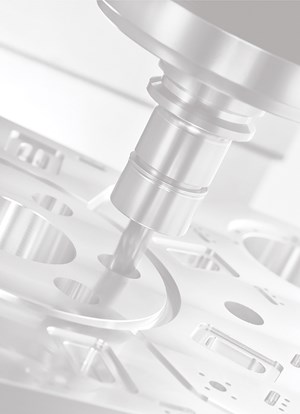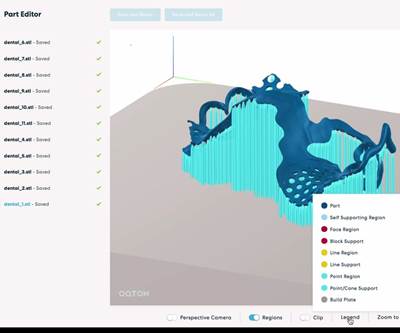ERP Helps Forward-Thinking Manufacturers Look Back
Enterprise-wide performance data and an understanding of which metrics matter form a foundation for the predictive analytics that characterize “smart” CNC machine shops.
Share



I recently used this space to report on a “factory operating system” that developers describe as “Google Maps for manufacturing.” Driven by artificial intelligence (AI), this computerized assistant predicts how different options for, say, sequencing manufacturing operations or scheduling jobs might play out. Based on both user priorities and historical data, the system suggests changes that are implemented automatically once approved.
This predictive analytic capability—this use of simulated “what-if” scenarios to guide decision-making and make manufacturing proactive rather than reactive—is the kind of thing that thought leaders envision when they describe the “smart” factories and shops of the future. However, it seems to me that many shops are not yet ready to take full advantage of predictive analytics, regardless of whether AI is involved.
Jeff Ralyea, president of the manufacturing division of software developer ECi, says the same thing about many of the company’s JobBoss and M1 enterprise resource planning (ERP) system users. “At first, a lot of companies just want to be able to get the information out of Steve’s spreadsheet when he goes on vacation,” he explains. With that accomplished, manufacturers tend to seek insight about their businesses by using ERP data to “look in the rear-view mirror,” he says. “They’re not doing predictive anything.”
Looking back is essential to looking forward...
However, manufacturers motivated to use the mirror provided by an ERP system are likely farther along the path toward predictive analytics than they realize, he says. Looking back is essential to looking forward, and ERP can provide a foundation for both. By extension, it can help manufacturers prepare for the inevitable, yet unpredictable change that developing technologies like AI and machine learning can bring.
For one, the primary function of ERP—streamlining day-to-day business management tasks—makes the software a unified, organized source of information about everything from quoting and material management to finances and logistics. Much of this data can directly feed predictive analytics systems. For instance, AI-driven scheduling can derive critical assumptions for modeling different scenarios directly from ERP data, including orders of operations, processing times at various workstations, the locations of potential bottlenecks and more. “The first step to using data is to effectively collect it in the first place,” Mr. Ralyea says.
For another, the latest ERP systems are more tailored than ever to individual users’ needs—users that increasingly crave capability to leverage their data. “Manufacturers are looking to us for insight,” he says. “Probably the most important things they’re looking for are pre-built dashboards that explain how efficient and effective they are, as opposed to just operational documents.”
Determining what these dashboards will look like begins with determining which questions need answering for the specific manufacturer in question. In ECi’s case, he says consultations with customers and prospects tend to be specific and granular, digging into how specific business units have performed in the past, why they perform the way they do and how their performance should be evaluated in the first place.
With a customized system in place, reflective analysis can morph into an elemental form of predictive analysis. For instance, top decision-makers can predict the result of adding a three-axis machining center instead of a five-axis, or going without new equipment. People in other roles can use different dashboards developed from different sets of questions to inform their own “what-if” exercises. “If you’re the operations manager,” Mr. Ralyea explains, “we can help answer questions like, How efficient are my workers and machines? How many jobs can I get through? What kind of disruption will occur if I drop a hot-parachute order into the factory?”
Shop smarts likely require more than ERP. For instance, functionality required for predictive maintenance, such as processing sensor feedback that indicates the health of a machine tool spindle, is generally outside the purview of shop-management software. Nonetheless, ERP data—how many jobs are scheduled in the next month, part-quality information and so forth—can be beneficial or even necessary to predicting when maintenance should occur and what might happen if it doesn’t.
Overall, machine shops should understand that ERP can do more than streamline functions like accounting, inventory management and various forms of reporting. These systems also can inform what additional data to collect, how to collect it and what to do with it in the future. “Whatever other tools and technologies are available won’t be applicable unless you know what really matters to you,” Mr. Ralyea says.
Related Content
How a Family-Owned Tooling Company Competes with Global Giants (Includes Video)
Not ready to go digital? Consider this: With Siemens NX ecosystem, precision shop D’Andrea cut its programming time by 50% and is able to compete globally—even against industry giants.
Read MoreHow a Custom ERP System Drives Automation in Large-Format Machining
Part of Major Tool’s 52,000 square-foot building expansion includes the installation of this new Waldrich Coburg Taurus 30 vertical machining center.
Read MoreData Visibility Boosts Beryllium Shop’s Revenue
Consistency is key for beryllium manufacturing, so the data visibility granted by Harmoni has swiftly become a vital, profitable tool in the shop’s arsenal.
Read MoreThe Smarter Way to Take Full Control of Your CNC Machine Shop
Designed to bridge the gap between CAM programmers and shop floor operators, SolidShop provides a seamless, real-time solution for managing G-code, tracking production and eliminating costly mistakes.
Read MoreRead Next
AI Makes Shop Networks Count
AI assistance in drawing insights from data could help CNC machine shops and additive manufacturing operations move beyond machine monitoring.
Read MoreOEM Tour Video: Lean Manufacturing for Measurement and Metrology
How can a facility that requires manual work for some long-standing parts be made more efficient? Join us as we look inside The L. S. Starrett Company’s headquarters in Athol, Massachusetts, and see how this long-established OEM is updating its processes.
Read More



















 (4).png;maxWidth=300;quality=90)







